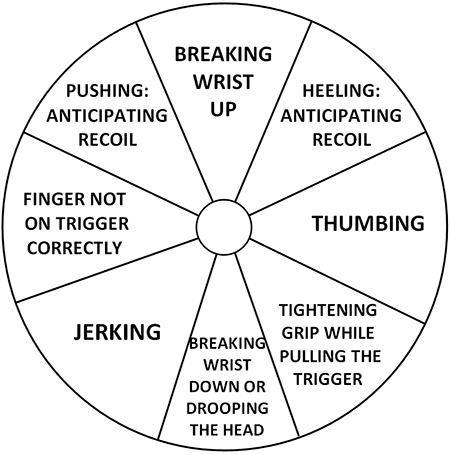Low and left almost always indicate a pre-ignition push/flinch for a right handed pistol shooter. And it's nearly always combined with (indeed, caused by) a blink just before the shot goes off. It's possible that you've learned to time your blink/flinch with other guns and haven't yet with the Glocks, perhaps because of where the trigger breaks. Or, more likely, you simply don't "trust" those guns with the deep lizard-brain part of your mind that controls reflexive blinking and flinching. Maybe it's because they subjectively recoil more to you. Maybe you've read a bunch of stories of Glock KB's. Maybe they just hit your hands in the wrong way and actually hurt to shoot.
FWIW, it's not uncommon for people to be able to shoot X or Y gun without flinching, but have a big flinch with gun Z. Often this is recoil related, but there can be other causes.
The best way to see whether this is, in fact, a blink/flinch issue is to do the old ball-and-dummy drill. Get a couple of dummy rounds and have a friend load a magazine with a mix of the inert rounds and live rounds. If you flinch on a dummy round, the blast and recoil won't cover it up, and you'll feel the big push/dip. And your friend will easily see it happen. This drill isn't necessarily a cure, but it will help confirm or exclude the blink/flinch diagnosis.



